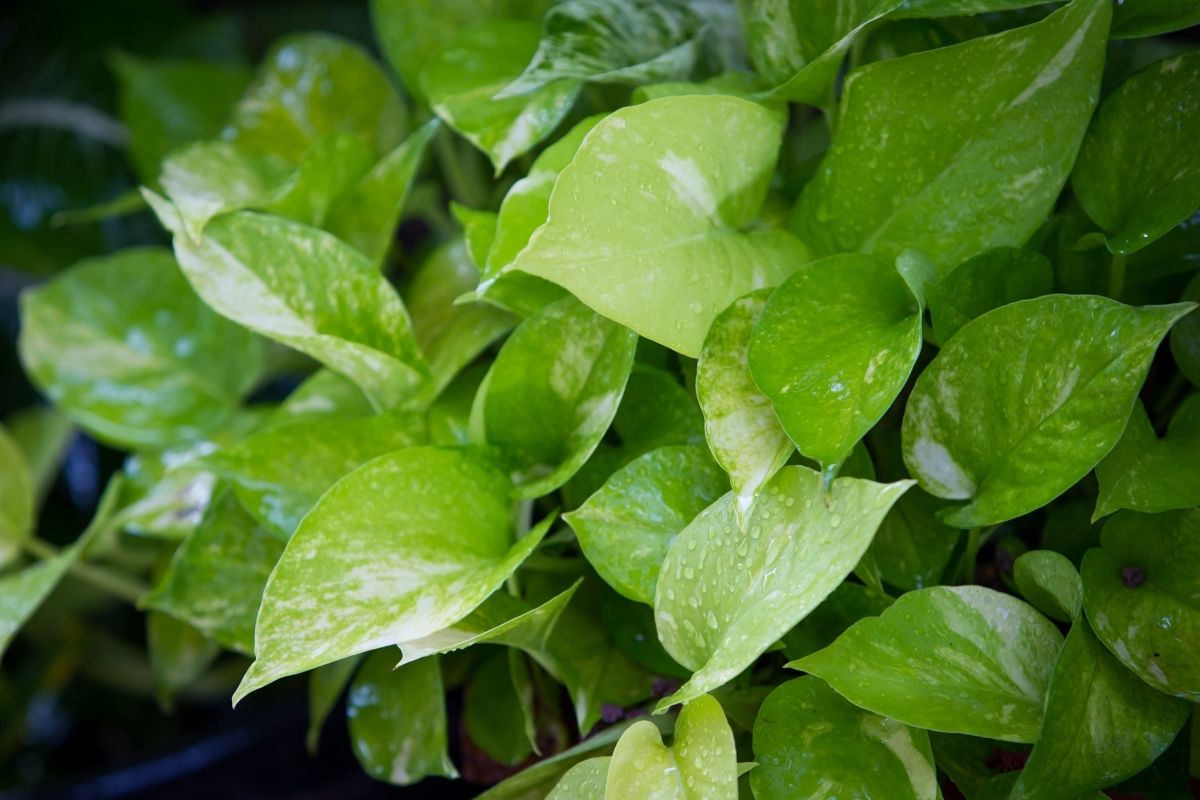Pothos plants, devil’s ivy, are some of the most beautiful and low-maintenance houseplants you can own. Even the easiest plants to care for can sometimes have a few problems. From water to fertilization the indoor nursery has you covered.
If you suspect your pothos plant hasn’t been getting enough water you’ve come to the right place. Read on and we’ll help you determine if water is the main culprit of your unhappy pothos.
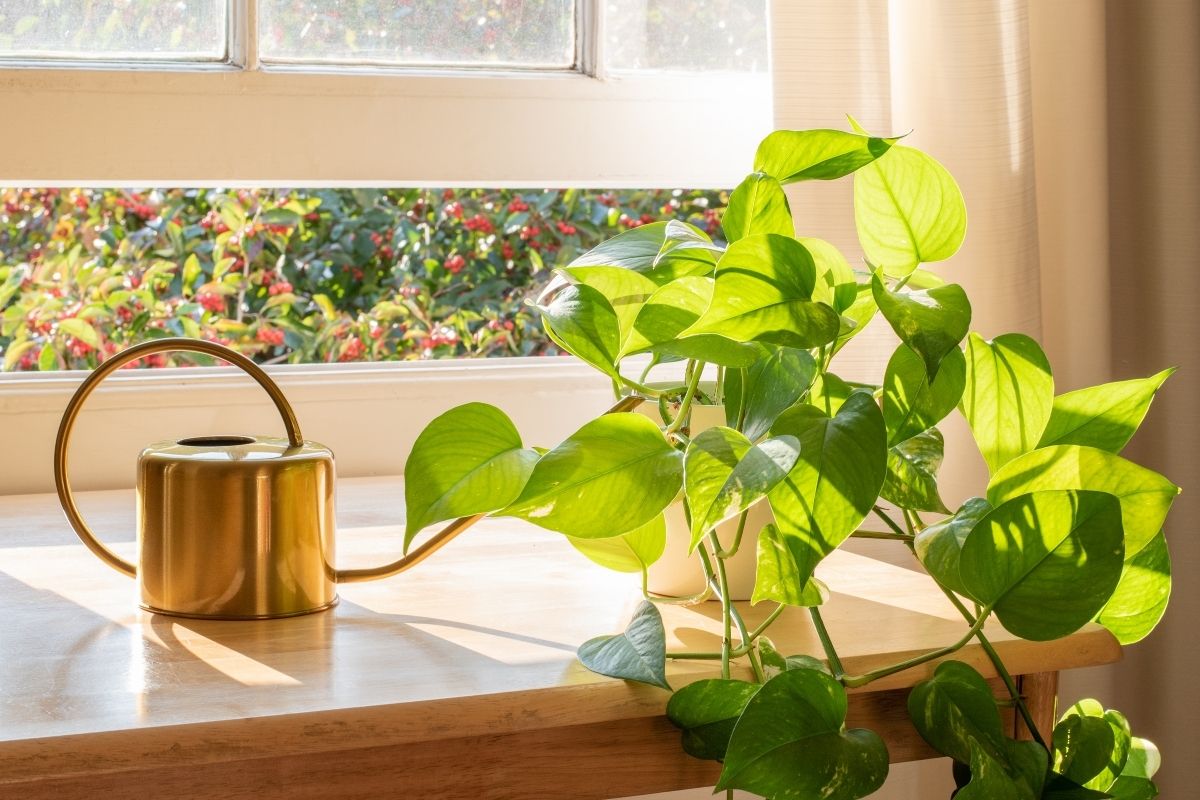
signs of an underwatered pothos plant
Your pothos is looking less than happy. You’re not exactly sure why it looks sad, but you do know you have forgotten to water your plant regularly. Indoor plants need special attention to stay happy and healthy. Keep a keen eye on the leaves and vines of your pothos plant. Potted plants tend to suffer from things like root rot and lack of water more severely than their outdoor friends and family.
When a plant becomes stressed due to a lack of water you expect a rapid decline in plant health. Here are some of the most common symptoms of an underwatered pothos plant.

- leaves and vines look limp – As the roots of your plant dry out significantly you’ll notice the pothos leaves and vines starting to appear limp. This is caused by the lack of water your pothos plant has in its cellular structure. Water helps the leaves and vines to stay upright and strong. Think of water as the distribution system of nutrients and health.
- yellow leaves – Are you noticing yellow leaves on your pothos? You may notice that some of the pothos leaves are starting to turn yellow. This is one of the most obvious signs to keep an eye out for. Underwatered plants will begin producing yellow leaves when the plant is too dry. Green color in the leaves is an indicator that your plant is happy and healthy.
- soil separates from the edge of the pot – It’s easy to notice an underwatered pothos by checking the soil. Maintaining proper soil moisture is key to avoiding things like root rot, excess water, and poor pothos health. While the soil should be dry to touch before watering it should not look like the surface of a dry cracked desert landscape. If the soil in the pot is pulling away from its edges your pothos plant needs more water.
- crispy leaves – An underwatered pothos plant’s leaves will show you signs when it has been neglected and underwatered. If your pothos plant consistently does not get enough water it will go into survival mode. With reduced water your plant cannot maintain its health and will start dying bit by bit. Transpiration is the process by which water moves from the roots throughout the plant. Water that is not consumed in the metabolic and growth process evaporates through the leaves. When the leaves of a plant lose their ability to transpire you’re left with crispy dead yellow and brown leaves.
how to save a pothos plant after underwatering
Your underwatered photos plant is suffering so let’s jump into action! It’s time to save your plant.
The most important thing you can do immediately is get your pothos hydrated properly and restore the nutrient levels in the soil.
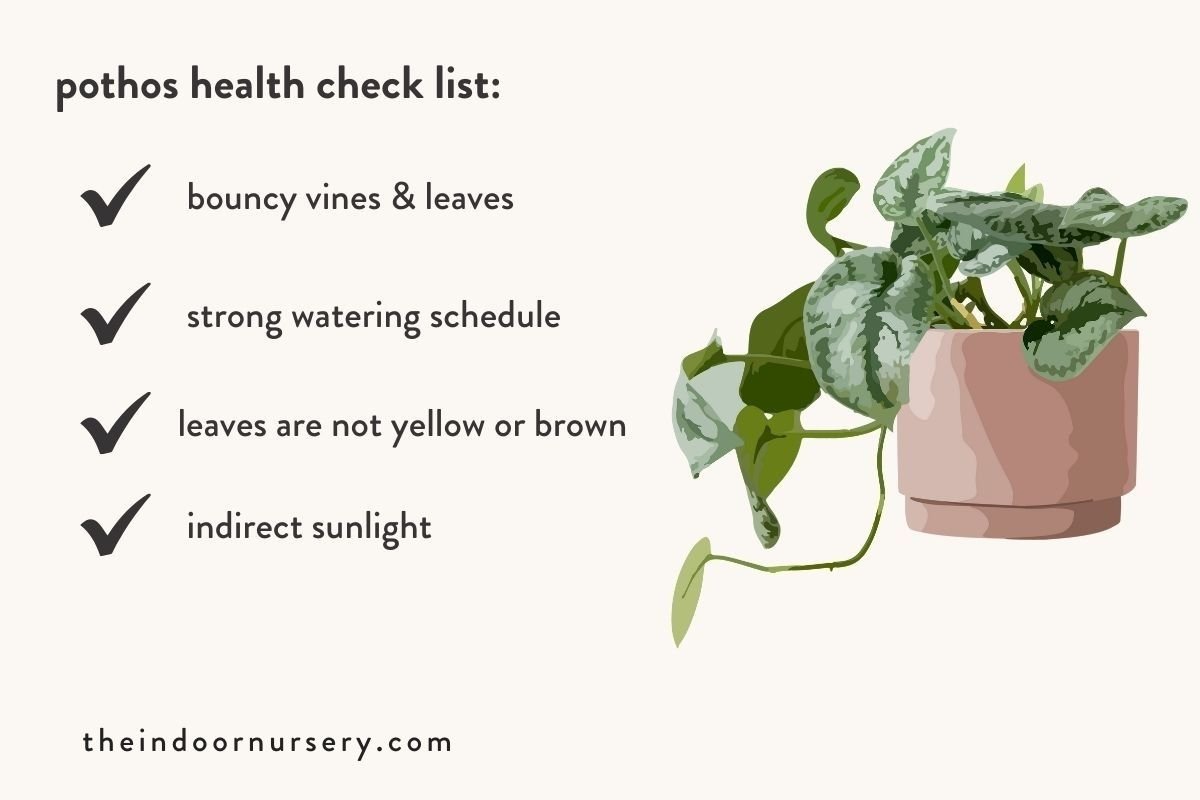
what you’ll need
- water
- leakproof spray bottle
- chopstick or long pointy object
- liquid fertilizer
- well draining potting soil
step 1: water your pothos plant thoroughly
The most important thing you can do immediately to save your plant is to give it ample water. Pick up the pot and move it to your sink. Make sure to run water into the pothos pot until water pours through the drainage holes. Repeat this process three times in one day. Allow excess water to drain completely then return your pot to a shady spot in your home.
If your soil is really hard, poke holes in it with a chopstick or another pointy object before watering your pothos plant.
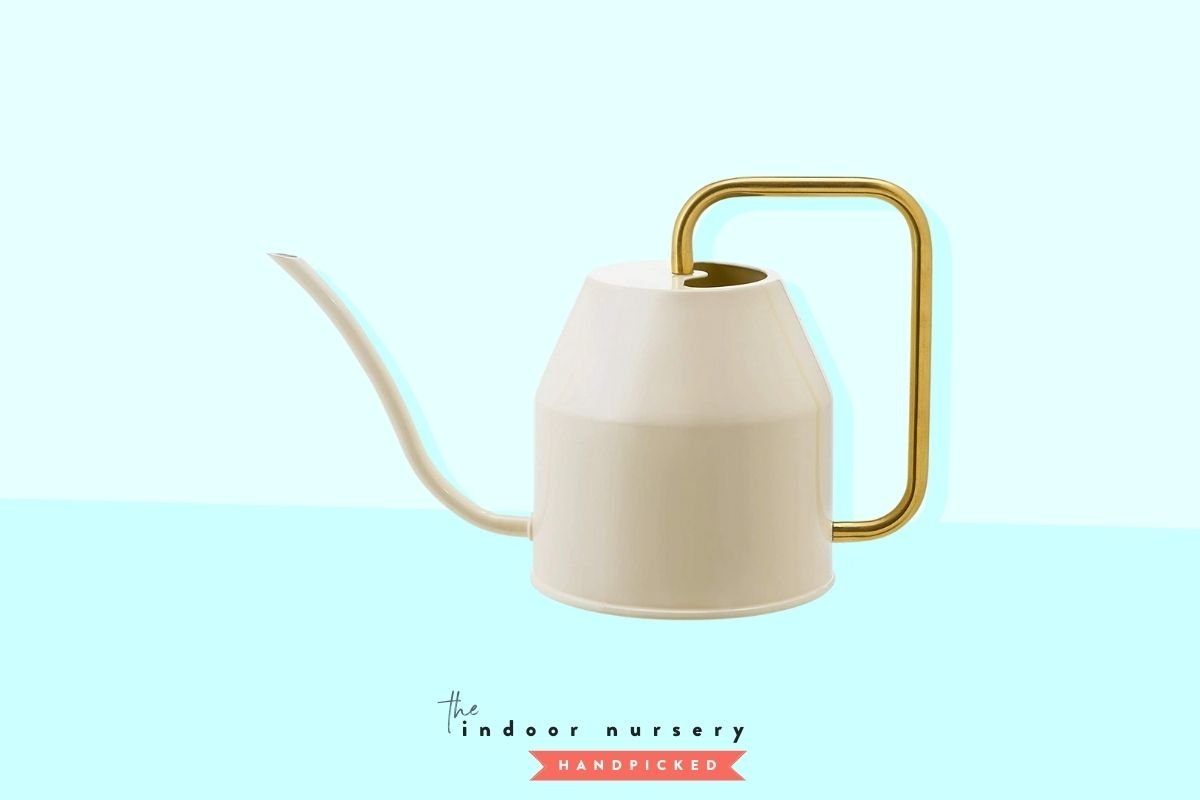
step 2: remove any dead leaves or vines
It’s important to reduce the amount of stress your pothos plant is under. In some cases your plant could be expending excess energy trying to heal its damaged parts.
To reduce the stress, simply get rid of the damaged leaves and remove any dead vines. Before you begin pruning your pothos, be sure to wipe the blades with alcohol before use to sanitize properly.
This easy step will encourage new healthy leaves and vines to grow.
step 3: mist your pothos plant
Now that your pothos have saturated roots lets focus on the leaves.
Every few days you’ll want to mist the entire plant to encourage happy leaves and promote water uptake. Providing the right conditions for your pothos plant’s leaves will give it a fighting chance of survival.
Fill your spill proof spray bottle with tap or filtered water and spritz your plant 2-3 times per week until it comes back to full strength and the leaves appear strong and healthy.
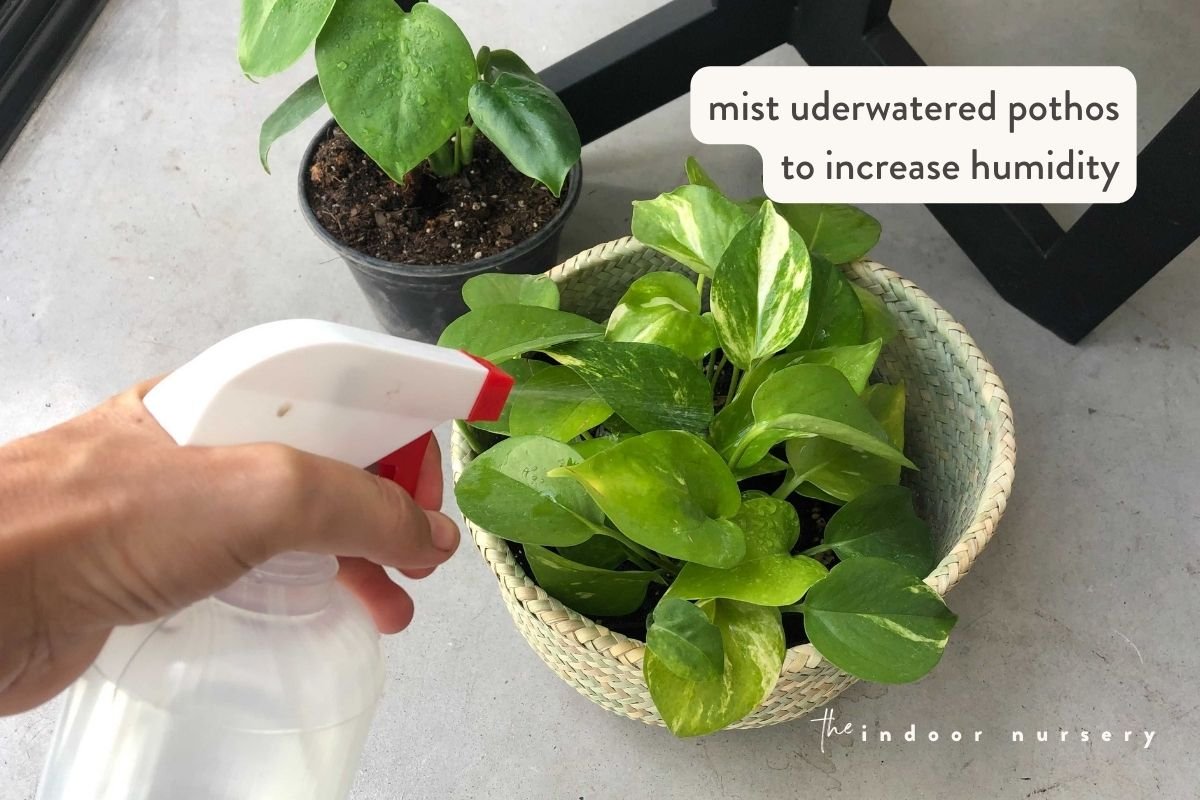
step 4: add liquid fertilizer
If you manage to save your underwatered pothos plant it’s time to use some liquid fertilizer.
When plants come back from the brink of death they have already squeezed every last possible nutrient out of the soil and vines.
You need to add a liquid fertilizer that is designed to provide a means of recovery. This particular liquid fertilizer is our favorite here at the indoor nursery and provides your pothos with everything it needs to bounce back.
Make sure to follow the directions on the bottle and add when watering normally. Always start slowly with fertilizer, you don’t want to accidentally cause fertilizer burn (which is way easier to do than you might think).
step 5: repot your pothos plant
A month or two has passed and yellow and brown leaves are now just a distant memory. You’ve noticed signs that your pothos has started to grow again and new leaves are sprouting from the vines. To help promote this new growth and encourage your pothos to continue growing strong let’s change the soil.
While the soil is slightly moist, loosen the dirt around the plant and gently remove the pothos from its pot. Gently remove the excess soil around the root ball and take out your well draining potting soil. Fill the pot half full with potting soil and set the roots down into the center of the pot. Now infill around the roots with more potting soil and compact the soil lightly around the plant. The soil level should be about 2 fingers width from the rim of the container.

Not only will this well draining potting soil help you avoid excess water and root rot, believe it or not it will help to hold water and nutrients more efficiently. All indoor plants including the pothos enjoy nice fresh nutrient rich soil.
tips for avoiding pothos underwatering
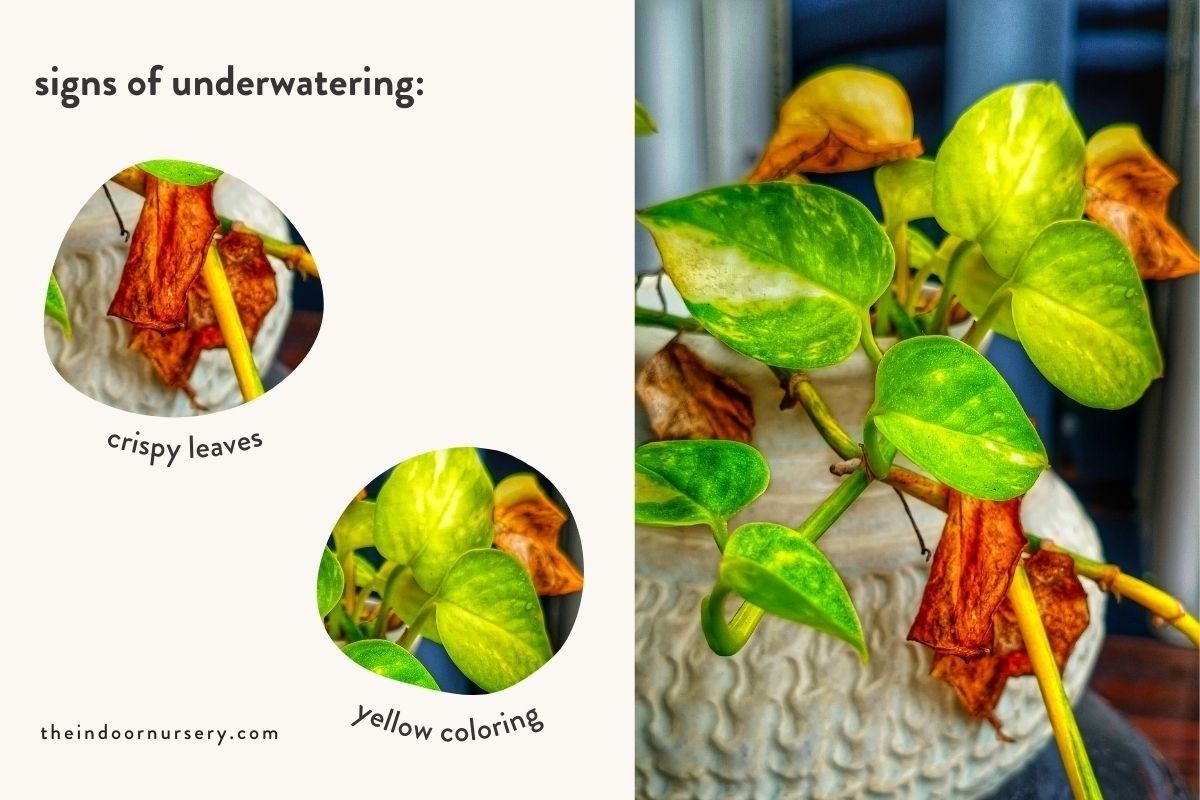
- watering schedule – The easiest way to ensure your pothos plant doesn’t end up in an underwatered situation is to set up a watering schedule. Setting a schedule for watering on specific days will help make watering easy. A schedule will also ensure you’re not overwatering your pothos plant. Allow the plant’s soil to dry completely before each watering and adjust the schedule accordingly.
- humidify the air in your home – If you have several humidity-loving tropical plants, it’s a good idea to increase the local humidity in the room where they live. This will actually reduce the amount of water you need to give your plants as they pull moisture from the air. Just be sure to continue monitoring your pothos’ soil to avoid any surprises.
- avoid direct sunlight – Pothos plans that get too much direct sunlight will dry out significantly faster. This is a problem because the leaves may begin to turn crispy yellow brown and you may notice curling if the sun is too hot. Place your plant in a spot that receives plenty of indirect light. This will encourage growth and also allow the plant to regulate its preferred temperature. You need to make sure your plant isn’t getting too much light.
- be mindful of the seasons – The seasons will affect the watering schedule of your pothos plant. When you notice the weather conditions starting to change be mindful of your plants needs. Make sure you’re watering based on the amount of moisture in the soil. Wait until the soil is dry to the touch before adding more water. During the winter months plan on watering less and watering more during the spring and summer.
- try a soil moisture meter – If you really want to make sure you’re not giving your pothos too much water or too little water you may want to try a moisture meter. The meter will let you know if you have wet soil or dry soil. It’s very easy to use. Simply stick it in the soil and keep an eye on the meter. Once the meter reads between the 1-3 level you can confidently water your pothos. This is our favorite stainless steel moisture meter.
- perform a health check – Just to be sure your pothos is strong and healthy keep an eye on it. Make sure the leaves are not turning yellow or brown. Vines and leaves should appear bouncy and springy. Confirm with yourself that you’re sticking to your new watering schedule. Performing this check from time to time will give you a sense of what your plant looks like when it’s happy and healthy and help you avoid an underwatered pothos.
More about pothos
- How Often To Water Pothos Plants (And When To Cut Back)
- Marble Queen Pothos Care Guide
- How To Make Pothos Fuller (In 5 Minutes)
- Our top pothos fertilizer picks for luscious vines
- Golden Pothos plant care: how to keep them happy
- Pothos root rot: what to look for and how to fix it
- How to grow pothos in water for *decades*

